Bedside Chat
SURVIVAL of the FRIENDLIEST
Bedside Chat
Is Your Dog Smarter Than You?
Can Bonobos Show You How to Share Your Love?
by Dr. Susan Block.
Those words “Survival of the Friendliest” have a familiar ring, like an old saying you were taught long ago.
But most likely, you weren’t.
In fact, you probably learned the opposite, that Charles Darwin’s famous “Survival of the Fittest” rule meant that only the strong survive in the human “race” to the top, that those tough alpha males, stiff competitors, conquering conquistadors, ruthless capitalists and Superman-types were, essentially, the “winners” of the battle, knocking out, stepping on or blowing up the competition to win “Survival of the Fittest.” Like on that classic *reality* show Survivor. It’s not pretty, but it’s the Law of the Jungle… or the Island… or the Ratings War. Isn’t it?
No, actually, it isn’t.
As Duke University Professor of Evolutionary Anthropology, Dr. Brian Hare, and award-winning journalist and research scientist, Vanessa Woods, explain in Survival of the Friendliest: Understanding Our Origins and Rediscovering Our Common Humanity, and in an interview I conducted with them as part of The Dr. Susan Block Show Bedside Chat in the Coronapocalypse series (#25) and peace-through-pleasure studies program, the scientific truth is that the “fittest” living things tend to be the friendliest.
That is, Darwin’s concept of “Survival of the Fittest” doesn’t have much to do with physical fitness or rugged individualism, despite what the bullies, racists, eugenicists and super-capitalists say. It’s not about being the strongest, the toughest or even the smartest.
Though it might have something to do with being the sexiest… especially when it comes to “sexual selection.”
Friendliness has long been the winning attribute of the human animal.
Being sexy, warm, caring, communicative, cooperative and even nice, are all part of this curiously powerful “friendliness” quotient that has enabled humans and other creatures to survive and thrive for millennia.
How about those other creatures? Aren’t they all dog-eat-dog in the shark-tank competitors?
Read “Survival of the Friendliest” on COUNTERPUNCH

Sure, lions may fight to be “King” of the Jungle, and elks can get their antlers caught up in WWE-style competitions. But Survival of the Friendliest shows how, far more often, successful cooperation rules nature, from ants working together to create palaces of sand, to flowers and bees developing a beautiful, fragrant, symbiotic relationship allowing them both to bloom and buzz. Likewise, friendliness has long been the winning attribute of the human animal.
Yes, we are animals, and a lot of human problems stem from forgetting that basic fact. But there are two other species that Hare and Woods present as shining examples of friendliness at its peak (and they happen to be two of my personal favorites): bonobos and dogs.

I first met Vanessa Woods through her eloquent book, Bonobo Handshake, about her primatological research and personal experience at Lola ya Bonobo. Video Still
Hare and Woods are internationally renowned experts in both. Partial disclosure: I’ve known Vanessa Woods (virtually) since 2010 when I interviewed her about her marvelous memoir Bonobo Handshake (she even calls it “one of my favorite interviews ever!”), and I feel like I’ve known Dr. Brian Hare for about as long, since he’s the book’s central human character, the leading man and the focus of the author’s greatest joys as well as her most maddening frustrations. Vanessa and Brian are married, and Bonobo Handshake: A Memoir of Love and Adventure in the Congo is, in part, the story of how they fell—and managed to stay—in love.
The tale is told against the complex, bloody backdrop of war in the Democratic Republic of Congo (DRC), which Vanessa, a young Australian journalist, felt drawn to witness while trying to understand her father who had been deeply traumatized by the American War in Vietnam. What she found was the only Great Ape who doesn’t make war or kill their own species, the peace-through-pleasure-loving bonobo.
I’d actually *discovered* bonobos myself over a decade and a half before reading Bonobo Handshake. The “make love not war” chimpanzees first seduced me from my TV back in 1993, then “through the looking glass” at the San Diego Zoo.
How could a socialist feminist sexologist like me resist a pansexual species (their Latin name is even Pan paniscus) who looks—and is—so close to human (only cuter) and has sex in a Bonobo Sutra of positions (including face-to-face) with partners of all genders?
Later on, I learned about how bonobos empower the females, cherish the males, honor the babies, share the resources, welcome strangers, mix lust with trust, and never kill each other.
And we thought we were the smartest apes.
Hare in the Woods
Back then, I assumed that everyone would fall in love with bonobos, as Capt’n Max and I had, and that bonobos would become *the next big thing.*
Boy, was I wrong! I guess I underestimated how erotophobic the American mainstream media (MSM) and academia could be.
Fit or unfit, cooperation is much better than competition, especially for our *mental health.*
Two decades later, thanks in part to Bonobo Handshake, the puritanical press has cautiously begun to open up to our kissing cousins who swing through the trees as well as with each other.
Unlike me, Vanessa was—and is—as sweet and wholesome as apple pie (Aussie-style). But unlike so many prudish primatologists, she wasn’t afraid to talk about bonobo sex. She also wasn’t too busy to answer my numerous silly bonobo questions.
However, sex (which Brian and Vanessa confess to having had at least twice) sometimes leads to babies, and they had two, so Vanessa got quite busy over the next few years, at which point, Brian—despite being an in-demand biological anthropologist, mediagenic science superstar and busy father—began to answer my questions. Over the years, Brian has patiently helped me to understand new bonobo research, and even commiserated when Dawn of Planet of the Apes misleadingly called its most vicious ape character (Koba) a “bonobo.”
Both Dr. Brian and Vanessa have worked with distinguished anthropologist, Dr. Richard Wrangham, who has a place of honor in Bonoboville, being one of the first scientists to talk about bonobos on The Dr. Susan Block Show, when he wrote Demonic Males (1996). Harvard legend has it that our interview almost cost him his tenure.
Hopefully, Dr. Brian and Vanessa won’t be penalized by academia or the MSM for their DrSuzy.Tv appearance promoting Survival of the Friendliest, the second book they’ve written together. Yes, this couple is so “fit”—besides their two kids and two big jobs— they write books together. Talk about cooperating under pressure! Plus, they look adorable together, even when zooming in from two different locales.
“When you have sex,” I can’t help but wonder to myself out loud, “Do you say, ‘Now the Hare is in the Woods!’?”
Terrible joke, of course, but they laugh uproariously at it, friendly folks that they are.
Their first book together was called The Genius of Dogs: How Dogs Are Smarter Than You Think, and this current collaboration has that genius title, Survival of the Friendliest. Its premise is that Darwin’s famous maxim is one of the most “misconstrued” phrases in the history of science. “Survival of the Fittest” is the ability to survive and reproduce, nothing more, nor less.
But what gave us this evolutionary superpower (well, “super” until lately)? After humans split from chimps and bonobos 6-9 million years ago, we Homo Sapiens shared the planet with other humans (yes, though they may not have made it into the Bible, there were other humans), such as Homo Erectus and Neanderthals. While those other human species went extinct, we Homo Sapiens survived and thrived thanks to our greater ability to communicate, cooperate, collaborate, cohabitate and commune. Neanderthals were bigger and stronger than us, and with their larger brains, they may have been smarter as well. But our greater skill in socializing (etymologically and intimately connected to socialism), aka “cooperative communication,” led to denser groups, better tools, greater expansion… and eventually to human agriculture, technology, slavery, war, devastating environmental destruction and the battered world we live in today.
But wait, we’re getting ahead of ourselves—and not in a good way. Let’s get back to the good in humanity. It’s in there somewhere!
Hare and Woods know where: “Cooperation is key to our survival as a species,” they explain, “because it increases our evolutionary fitness.”
It’s also a more natural, fun, equalizing, less stressful way for most of us to live, whether we choose to have 12 kids or be child-free (like me!), i.e., even if we’re not so “fit” in the procreational sense.
Fit or unfit, cooperation is much better than competition, especially for our *mental health.*
Why Do We Kill Each Other?
Okay, so if we affable Homo Sapiens are so damn cooperative, why are we always killing each other?
The other side of the evolution of human friendliness or “self-domestication,” say Hare and Woods, is dehumanization. We can be the most tolerant and loving species—to family, friends and to strangers that we *recognize* as friends. However, if we feel threatened, we can be the cruelest, most merciless animals on the planet, making war, genocide, slavery, torture, occupation and annihilation.
It’s funny, and very sad, how we so often use our best traits against ourselves. For instance, our very human ability to tell stories stimulates tremendous empathy, but it can also sway us to dehumanize whole groups of people, even if the story is just about one member of that group, and even if that story is later proven to be a lie.

The flip side of the very quality that keeps us survivin’ and thrivin’ could kill us all. Perhaps very soon.
Hare and Woods use the example of the Kuwaiti ambassador’s young daughter telling the U.S. Congress the story of Iraqi soldiers throwing Kuwaiti babies out of incubators and onto the floor in 1990. That was a total lie, but it was a big part of inciting the American public to support the First Gulf War, as well as the second, and the crippling sanctions in between.
So, the flip side of the very quality that keeps us survivin’ and thrivin’ could kill us all. Perhaps very soon.
Our race to the *top* of the capitalist heap is literally destroying the Earth. Individual billionaires put their greed ahead of the lives of billions of their fellow humans, as our hyper-competitive system puts “profits” ahead of conservation. Our nuclear bombs are poised in the direction of our neighbors, and theirs at us. Systemic racism tears us apart, microaggressions and major aggression continue, and our religious creeds just seem to deepen the divide.
But is the preeminence of that “flip side” so inevitable—as it seems to have been since the dawn of so-called civilization and certainly in the last few years? Probably it is, but maybe it’s not.
So, how do we as humans reverse our hell-bent momentum? How do we extend our talent for friendliness beyond our comrades to people who don’t look like *us* or agree with us, and even to the nonhuman animals our culture is decimating? How do we “expand our circle of trust”?
Jigsaw Culture
Throughout human history, various ideas and techniques have been put forth to stimulate human friendliness and reduce dehumanization. In other words, pump up the love and punch down that hate.
Sounds like a plan! However, as I’ve often observed, the best laid plans may not get you laid the way you planned. And most of these well-intentioned plans to get us to love one another, or at least act friendlier, haven’t panned out so well.
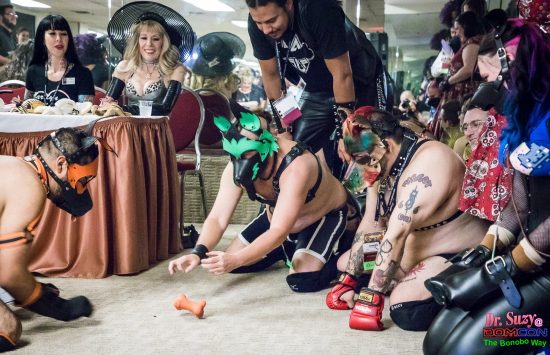
“Human Dogs” engage in Jigsaw-Style play as their Handlers watch at Madame Margherites’s DomCon Pet Awards where Mistress Porcelain and I were judges. Photo: Jux Lii
But there’s one way that works! Apparently, the key to enhancing human friendliness is friendship itself. “Social psychologists have found [that] becoming friends with someone from another group is one of the quickest ways to short-circuit that dehumanization,” say Hare and Woods.
But how do you create friendship out of animosity? Hare and Woods found that the only known method that really worked was the “Jigsaw” system whereby students or participants from different groups are brought together to accomplish a goal.
Sharing common objectives forces humans to cooperate because they depend on each other’s abilities and enthusiasm to get their jobs done, meet their goals, communicate effectively and collaborate productively.
Sounds very socialistic!
Politics aside, the Jigsaw Method encourages tolerance and kindness while discouraging cruelty and coldness. Best of all, this puzzle doesn’t *preach* the Credo of Friendliness, which can be annoying. Instead, it stimulates and rewards friendliness organically.
Wonder what a Jigsaw Orgy might be like—oops, there goes my dirty mind again. Back to saving the planet through friendliness…
How do we do that?
Is Your Dog Smarter Than You?
We humans can learn a lot about friendliness from other species who are, in some ways, even friendlier than we are—especially nowadays as our hyper-competitive culture takes us further and further away from our friendly primate origins.
Consider, for instance, that furbaby that very well might be snuggled up to you right now or barking at your door asking you to come out and play.
How did these four-legged creatures become our “best friends”?
Hare and Woods are dog-ologists. The technical term is cynologist, though hardly anybody uses that, certainly not Hare and Woods, aka Brian and Vanessa (it seems strange to call them “Hare and Woods” when talking about bowwows), though both have spent a lot of time around canines, especially Brian.
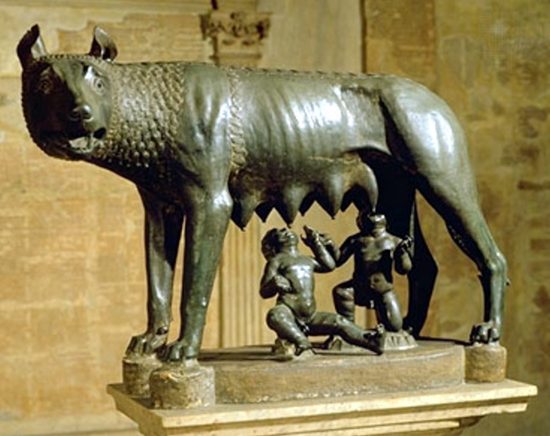
Romulus and Remus, the twin founders of Rome, were said to have been raised by the Luper (She-Wolf), close cousin of Dogs.
Just as Lupercalian legend has it that Romulus and Remus were raised by a Wolf, aka the Luper, Brian was raised by a Labrador retriever named Oreo.
Dogs play a big role in this part of our interview. At one point, an eight-year-old golden lab mix named Congo (a retired service dog from Canine Companions for Independence) enters Brian’s Zoom frame for a moment of lap time, then departs for other amusements.
Later, Chico, Bonoboville’s beloved year-old Pomeranian puppy-in-residence, sits on my lap like the proverbial “good dog”—as long as I’m providing peanut butter and petting.
These dogs of ours are the canine kings of their human-made castles.
Indeed, the longstanding inter-species friendship between dogs and humans is almost as intimate and mutually beneficial as that between flowers and bees, and our canine friends often get the better end of the human/dog deal. People used to assume that domestication makes animals unintelligent, but really dogs are so smart, they manage to manipulate us humans into taking almost complete care of their every need. It’s amazing what we do for our doggies—and we don’t even eat them!
One reason we humans love our mutts so much is that we feel we can control them in ways that we can’t control each other. But aren’t they the ones controlling us?
The “genius of dogs,” to use the title of Vanessa and Brian’s first book together, is that they have learned to speak our language, usually with greater comprehension and sensitivity than we can speak theirs.
Of course, most pet pooches couldn’t survive in the wild any better than most humans, but they don’t have to. Compare the dog population throughout the world with their wild cousins, the beautiful wolves, who are, most unfortunately, highly endangered. Wolves tend to be very much afraid of humans—often with good reason!
Save the wolves!
Conventional wisdom was that prehistoric homo sapiens domesticated wolves into dogs. But really, humans weren’t (and still aren’t) that clever. In fact, almost the reverse appears to have been true, and it all comes down to garbage.
In Survival of the Friendliest, Brian and Vanessa explain how, over millennia, the friendliest wolves domesticated themselves and became even friendlier in order to get closer and closer to prehistoric humans and our delicious, nutritious trash. The wolves who were least afraid of us two-legged creatures came closest, got the most to eat and, eventually, these friendly wolves with no fear of humans became our beloved pet doggies.
Canine self-domestication has essentially involved befriending love-starved humans who then provide food, shelter and squeaky toys.
Some dog breeds actually work for their care, perhaps guarding, hunting, herding, searching, fetching or providing seeing-eye services for the blind (now that’s friendly).
These days, most pet dogs, like Chico, don’t have to do anything more than act friendly.
Chico looks like the Disney version of a wolf cub. However, he did reveal his sensitive side when he found a mortally wounded parrot in our garden a few days after our interview.
You might think this eager carnivore would pounce on the dying bird, but he just barked until *his* humans rescued the parrot whom we named Lori. Ultimately, the parrot passed on, but we turned Bonoboville into an avian hospice for those last few days of life, sending him off to the next dimension with love, thanks to Chico and his humans.
Would it benefit us to be more like our dogs? Definitely, in some ways, like loyalty, tolerance, shame-free affection, judgment-free love and, of course, friendliness.
Some animal play fetishists actually want to *be* dogs. Madame Marguerite’s Animal Play Awards are always one of DomCon’s highest attended events; human pooches—in furry costumes, leather ears and tails that vibrate as they wag—do tricks for doggie treats, incorporating the Jigsaw Method of cooperation and ravenously lapping up affection with love.
Why would a human want to be a dog? Various reasons, but for one, so many people treat their dogs better than their fellow humans; it’s a cliché. No wonder some humans fantasize about being their ideal owner’s beloved pup.
Pet dogs are the “house slaves” on the human plantation wherein most “domesticated” animals are raised to be eaten. Of course, most dogs aren’t forced to work like slaves; indeed, dogs are often pampered and provided for. Still, unlike their wild wolf cousins, they’re the “property” of the master and/or mistress of the house, and any moment could be sent into the proverbial “dog house” or otherwise abused by bad “owners.”
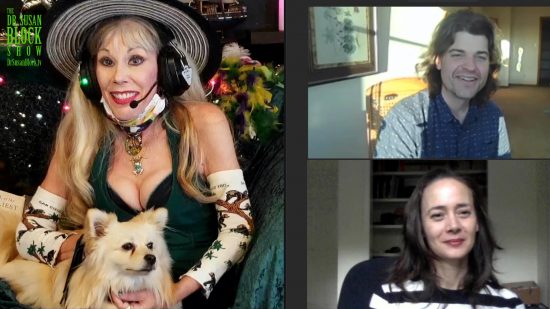
Prince Chico settles into his throne on my lap to listen to Brian and Vanessa expound upon “The Genius of Dogs.” Video Still
We humans love our dogs, but most of us (animal play fetishists aside) don’t want a “dog’s life” for ourselves.
Go Bonobos!
Another species that is unusually friendly—and much closer to human, as opposed to being a pet for humans—is the bonobo.
Here’s something to hoot about, at least for me, as a sexologist: Bonobo sex is “Exhibit A” for great ape friendliness.
Bonobos are known for *sharing* a lot of good consensual sex, along with food and other resources. This, in and of itself, is a compelling form of cooperation.

Dogs have survived and thrived for millennia by communicating well with people. Bonobos have survived and thrived for even more millennia by communicating well with each other.
Moreover, they go much further than that, as all that cooperative erotic activity appears to keep them from killing each other. Good consensual sex resources, sharing, gender egalitarianism and respect for the young all add up to what I call the bonobo way of peace through pleasure.
Dogs have survived and thrived for millennia by communicating well with people. Bonobos have survived and thrived for even more millennia by communicating well with each other.
Interestingly, bonobos are not as good at communicating with humans as dogs are—at least not on Brian and Vanessa’s tests—maybe, in part, because they’re not as motivated to follow our orders or even understand what we’re saying as are our beloved and utterly dependent pet puppies.
But bonobos’ extraordinary friendliness towards each other—and seeming lack of that “flip side” of human kindness that can make us so cruel—is what makes bonobo culture worthy of human study and even emulation (with caveats), especially in these extremely unfriendly times.
In contrast, Brian and Vanessa, who have worked with common chimpanzees as well as bonobos, describe common chimp life as a cycle of violence, competition, infanticide and subjugation of the female. Many lower status chimps are beaten, abused and even murdered, but at least life is good for the alpha male, right? Not really. “It’s incredibly costly to be dominant,” write Brian and Vanessa. Competition is stressful, even when you *win.*
In Our Inner Ape, Dr. Frans de Waal (who quotes The Bonobo Way in The Bonobo & the Atheist) posits that we humans have a bonobo side that makes love and not war, and a common chimpanzee side that loves to make war. For the past few thousand years, to our great destruction and that of many other species—and all for the supposed benefit of an oligarchical few at the top—we’ve emphasized our common chimp side.
But there is another way.
Nice Guys Finish First
In contrast with their raging common chimp cousins, bonobos are peaceful, sex-positive, gender-egalitarian and very respectful of babies. Brian is excited to share some recent findings from Wamba with us that observed female bonobos adopting orphaned babies (sadly, often the mothers are killed by bushmeat poachers, leaving too many motherless infants) and raising them as their own. Vanessa and Brian call the female-empowered bonobos “baby dominant,” in contrast with all other patriarchal Great Apes who practice infanticide, in addition to raping and forcefully subjugating the females.

Boho the Baby Bonobo Puppet comes out to play when Brian and Vanessa talk about the power of baby bonobos. Video Still
This is especially remarkable when you consider that, just like common chimps and all the other Great Apes, male bonobos are bigger than the females. But thanks to their food and resource abundance, bonobo females are able to form strong coalitions, so that single females are rarely caught alone with the males. To a great degree, bonobo love is based on Girlfriend Power.
Common chimp females are only nice to their close relatives and leave the other ladies out in the cold—or to be raped and abused by rapacious males. Bonobo females are friendly with all the other females, including the newcomers. Their “female solidarity” protects each other. It’s the ultimate sisterhood, even though most of the females in any given bonobo tribe aren’t blood-related sisters. They’re just real got-your-back girlfriends.
But that doesn’t make this some kind of Amazon society with no males. No, bonobo gals love bonobo guys, especially the “good boys,” the ones who are friendly, easy-going, generous, helpful, cute, sensuous and sexy.
In other words, when it comes to getting laid, friendliness pays.
Nice guys finish first in Bonoboville! Wouldn’t it be great if they did in Humanville?
Maybe the Military Industrial-Complex, the politicians, the MSM, the WWE and the bullies don’t think so, but I certainly do. “Be Bonobo-Friendly” is, after all, the 9th step of the 12 Steps to Releasing Your Inner Bonobo.
In fact, say Brian and Vanessa, bonobo females’ sexual selection for male friendliness is key to bonobo self-domestication. Recent studies show that the most reproductively successful male bonobos father more offspring than the most successful alpha male chimps. Nice guys get laid more in Bonoboville.
“The mechanism we think that played a role is sexual selection,” Brian explains in our interview, “that females had more food and that allowed them to have friendships so they could protect their babies in a way that chimpanzee females can’t, and it empowered them—exactly as you said—and they could then have a preference for friendlier males. And females prefer friendlier males.”
One of the qualities that give these “friendly” males the edge in the bonobo dating game, besides being nice, cute, peaceful, social and sexy, is having a cool mom. Yes, bonobos are “mama’s boys,” and the most popular bonobo males tend to have the most powerful yet nurturing mothers.
MILFs Rule Bonoboville!
Could Bonobos Teach You How to Share Your Love?
According to Dr. Wrangham, bonobos maintain their amazing peace-through-pleasure lifestyle in part because their natural habitat in the DRC Rainforest (the second largest in the world) has long been a real-life jungle paradise of plentiful, varied food and not many predators.
Interestingly, we humans would also have plenty of food for all if we shared our earthly resources just a little more equitably. Maybe we need to get Elon Musk and Bill Gates—two billionaires who claim to adore the egalitarian bonobos—to play the Jigsaw game with some houseless people.
Speaking of famous bonobo-curious humans, you may have seen the 2014 footage of Anderson Cooper visiting Lola ya Bonobo, bonobo savior Claudine André’s sanctuary outside Kinshasa that rescues bonobo orphans from the devastating bushmeat trade.
Dr. Brian was there to help, as he relayed on Sex at Dawn and Civilized to Death author Dr. Christopher Ryan’s Tangentially Speaking show. Side note: In 2010, Vanessa, Queen of Friendliness, also introduced me to the visionary Dr. Chris.

With “Sex at Dawn” and “Civilized to Death” author and “Tangentially Speaking” Host Dr. Christopher Ryan. Photo: Vlady Cee
Back to Anderson who, like me and everybody else who hears about bonobos, was interested in seeing them have sex.
Serious scientist that he is, Brian told Anderson, “I promise bonobo sexuality is not the most interesting thing about them…. What’s more remarkable is that they don’t kill each other.”
Can’t argue with that. Even for a sex-obsessed sexologist like me, sex is not as important as life itself.
But why don’t bonobos—especially bonobo males—kill each other?
At least in part, it’s because they get laid—by hot experienced Cougars (older females), exciting young newcomers and by each other. All that sex just cools them out.
Bonobos utilize sex for a lot of different purposes, as a bonding mechanism, to negotiate, to break up fights (make-up sex), support political connections, calm anxiety (bonobos often get anxious), heal suffering, strengthen friendships, enhance social status and accompany meals, just to name a few.
Of course, humans also engage in sexual activity for a variety of reasons, but perhaps due to our pervasive shame, less effectively than bonobos.
“Bonobos have a mechanism to diffuse tension,” says Vanessa, “and I think that’s what we really need.”
The bonobos’ method of diffusing tension via erotic activity shouldn’t be our blueprint, of course, but it can serve as inspiration.
Outercourse is In!
When we talk about “bonobo sex,” we don’t always mean sexual intercourse. In fact, we mostly mean what some consider foreplay or what I call “sexual outercourse.”
“The official scientific term for it is socio-sexual behavior,” says Vanessa.
“I like outercourse better, sorry,” her loving hubby retorts.
Whatever term you choose, it involves a lot of rubbing, aka “frottage” or massage. That’s another thing bonobos and dogs have in common. They both love to be rubbed. But bonobos also love to give the rub down, and they appear to cultivate great skills in this regard.

We humans may have an innate preference for those we perceive to be “like us,” and this makes us potentially racist and narrow-minded. However, we also seem to harbor, like our bonobo cousins, an innate attraction to the strange, the new, the exotic; it excites us.
Bonobos are tantric masseuses for each other, reducing stress and releasing oxytocin with each squeeze and caress. Should we humans be giving and receiving more massages for the sake of our mental and physical health—and even for the health of our planet?
Yes, but—and this is a BiG BUT that’s hard to get around (in more ways than one)—touch is so touchy these days.
For many reasons—from the continuing effects of the Coronapocalypse to the #MeToo movement and fears of increasing violence—we’re less inclined to get close in modern times. You could say, we’re losing touch with touch, even with those we love, let alone those strangers who could become friends.
This brings us back to that “flip side” of friendliness for humans, that cruelty to the “outsider,” even though they’re human too. Do bonobos even have a flip side? Unlike common chimps who hoard food for themselves, bonobos love to share. The only thing bonobos seem to enjoy more than sharing food and sex with friends is sharing food and sex with strangers. When given a choice for a dinner date, bonobos will often choose the stranger over the friend.
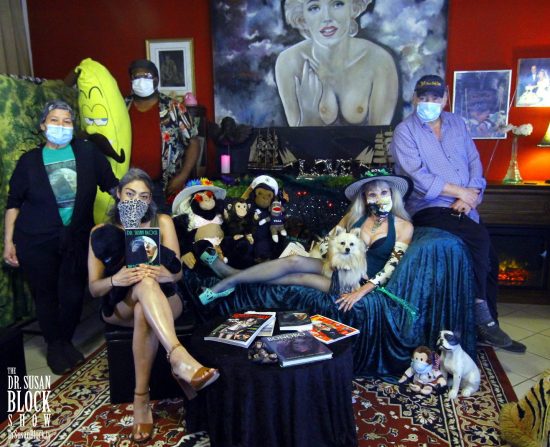
Bonoboville Crew: Ana, Mariah, Harry Sapien & the Big Banana, Dragon Steele Bonobo Plushie Family, Me & Chico, Capt’n Max, Dr. Bonobo, His Master’s Voice. Photo: Unscene Abe
Does that sound odd? Or can you relate? We humans may have an innate preference for those we perceive to be “like us,” and this makes us potentially racist and narrow-minded. However, we also seem to harbor, like our bonobo cousins, an innate attraction to the strange, the new, the exotic; it excites us.
Yes, Dr. Brian agrees, “the exotic is erotic.”
Perhaps it’s part of what Dr. De Waal calls our “bonobo side,” our attraction to strangers, our desire for erotic (as opposed to military) adventures, our urge to mix our genes with someone outside the family circle, our yearning to reach out and touch someone different.
In service of the powerful, our anthropocene systems have long supported the part of us that prefers people “like us,” and tried mightily to suppress the part of us that is attracted to people who are not “like us,” propagating the belief that natural arousal and the desire for something or someone *different* is doomed to be a fatal attraction.
So, perhaps it’s our loving worried parents, our hypocritical religion, our xenophobic nation and our erotophobic, capitalist, competitive culture that pump our fear of strangers, forcing the “flip side” of human friendliness, our cruelty to outsiders, to predominate for millennia. And this is why there’s hope that we can turn it around.
Yes, Vanessa asserts, “there is hope.”
“Bonobos hold the key to a world without war,” says Survival of the Friendliest. It’s a key that we humans may have lost when we discovered the wonders of farming and property ownership (stuff to fight over). It’s a key that we lost when we traded the meaningful joys of sharing sensual pleasure for the unsatisfying rewards of accumulating material wealth.
Perhaps we can find that lost key again through more “jigsaw” methods of interacting, and through studying bonobo culture.
There are now many “Peace Studies” departments at colleges and universities. When I ask Brian and Vanessa if any study the way that bonobos make peace, they confess they don’t know of any.
I’m not saying that we all need to have sex to make peace, like bonobos do, but shouldn’t we acknowledge that bonobos make peace through sharing pleasures—and that some kind of erotic, positive exchange is a key to peace among primates like us?
Shouldn’t we be more pro-bonobo?
Crossing the Uncanny Valley
Which brings us to the complex question of simianization, i.e., comparing people to apes. Scientifically and realistically, we humans are great apes, though many humans don’t like to hear that. In the course of delivering The Bonobo Way, I’ve been accused of simianization that is blasphemous (by the Religious Right) and insensitive (by the Woke Left), for saying that we humans are apes. It’s funny, but some people would rather be compared to dogs than apes—as long as they’re Top Dogs.
Brian and Vanessa explain that human discomfort with simianization is partly because they fall into “the uncanny valley.” That is, the human perception of apes is that being “almost human” makes them too close for comfort. So, instead of eliciting affection and closeness, they can provoke disgust and fear. The history of human so-called civilization is also extremely problematic, to say the least; simianization of Africans gave Europeans an excuse to enslave them. Simianization of Jews gave Nazis an excuse to exterminate them. Simianization of Asians gave Americans an excuse to bomb them. And so on.
Lately, I feel torn between respecting people’s understandable discomfort and continuing to speak essential, albeit uneasy truths about our great ape nature that I believe could set us all free.
This is also what bonobo conservation is up against.
Unfortunately, people’s touchiness about great apes being *too close* to human for comfort just makes the already gargantuan task of saving the highly endangered bonobos from extinction even tougher.

It’s a pleasure to talk with Brian and Vanessa about these challenges (almost like therapy!) because they deeply understand.
They’re also both on the Board of Directors of Friends of Bonobos which supports Lola ya Bonobo (Bonobo Paradise), a very special bonobo “refugee” sanctuary outside Kinshasa in the Democratic Republic of Congo, operated for many years by the luminous, tireless and extraordinarily effective Claudine André.
“Orphans” of the devastating “bushmeat” trade are rescued and cared for at Lola, and eventually, if all goes well, they are released back into the wild. During the Coronapocalypse, Lola staff have been working around the clock to keep the bonobos well cared for and safe from COVID-19 and the Delta Variant, to which bonobos are just as susceptible as humans.
Our amazing kissing cousins need and deserve our support. “You conserve what you love,” points out Vanessa. So, we have made it our business and pleasure to spread the bonobo love. The challenges are immense, but if we can keep the bonobos alive, they just might show us the way to peace through pleasure… and friendliness!
Read “Survival of the Friendliest” on COUNTERPUNCH
Lovers of dogs, bonobos, humans and, especially, each other… what are this extraordinary couple’s “secrets” to marriage and writing success?
“Forgiveness,” shouts out Brian.
“Fast reconciliation,” chimes in Vanessa.
When the going gets tough—for couples, communities or countries—both are essential to friendliness.
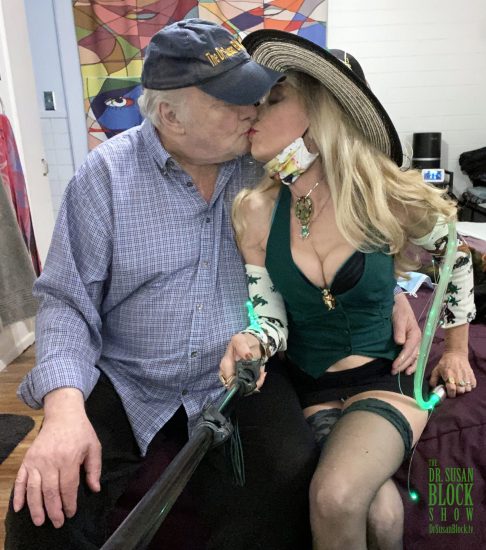
Inspired by Vanessa and Brian, Max and I practice “Forgiveness” (there’s always something) & “Fast Reconciliation.” Photo: Selfie
“SURVIVAL of the FRIENDLIEST” PHOTO GALLERY
© August 11, 2021. Susan Block, Ph.D., a.k.a. “Dr. Suzy,” is a world renowned LA sex therapist, author of The Bonobo Way: The Evolution of Peace through Pleasure and horny housewife, occasionally seen on HBO and other channels. For information and speaking engagements, call 213-291-9497.
Explore DrSusanBlock.com
Need to talk? Sext? Webcam? Do it here. Have you watched the show? No? Feel the sex. Don’t miss the Forbidden Photographs—Hot Stuff, look at them closely here. Join our private social media Society. Join us live in studio 😊. Go shopping. Gift shop or The Market Place. DrSusanBlock.tv, real sex TV at your toe tips. Sex Clips Anyone? FASHION, we have fashion! We also have politics. Politics? Have you Read the book? No? How about the Speakeasy Journal? Click here. Ok, how about some free sex advice?





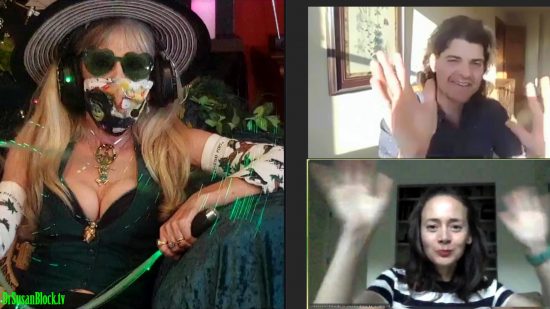

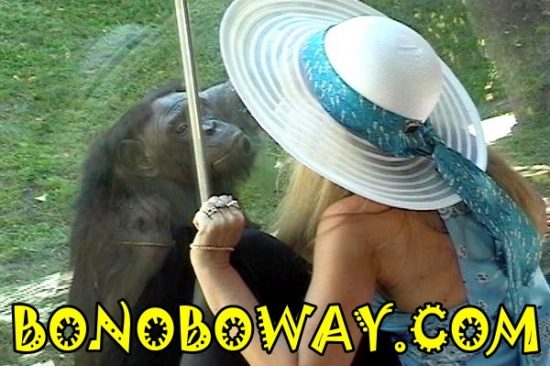

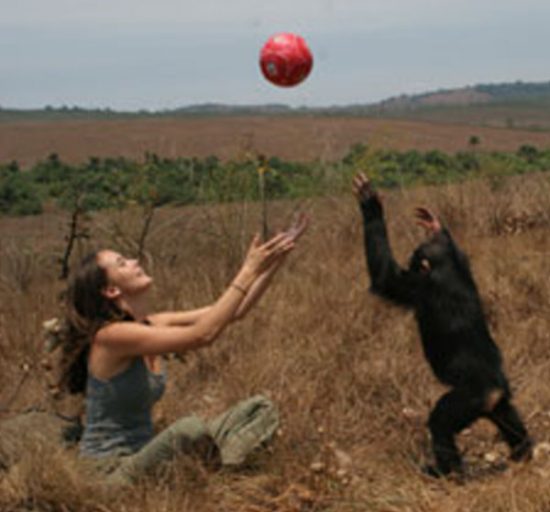


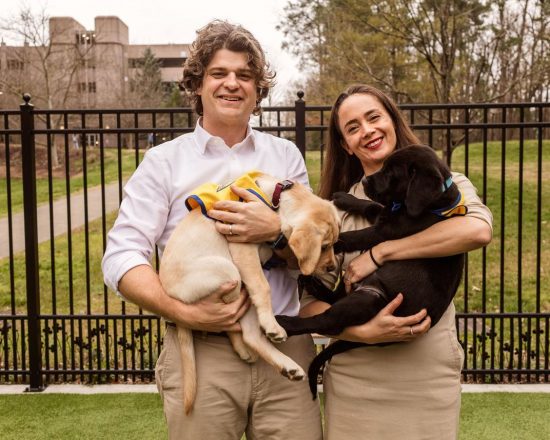


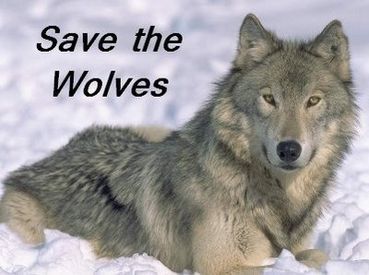


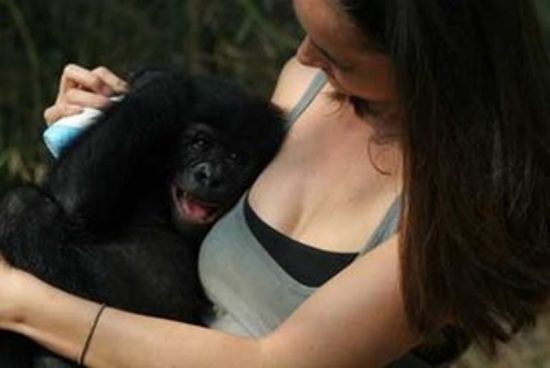
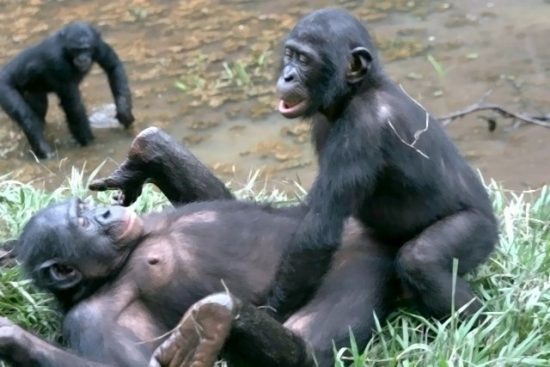

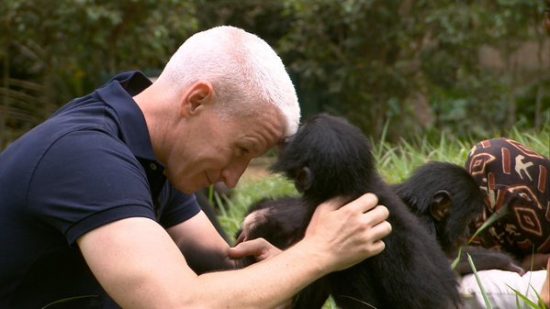

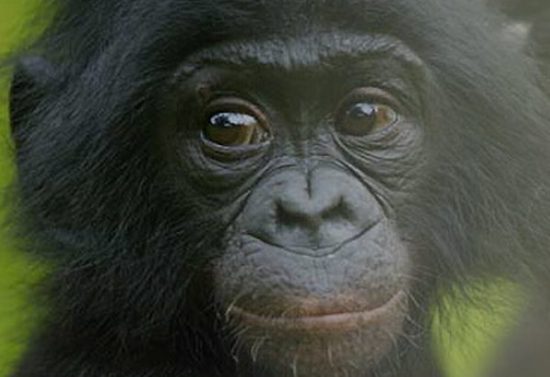

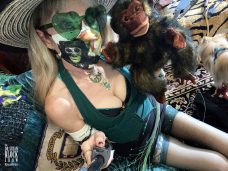






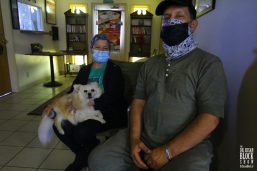






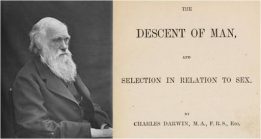



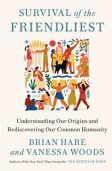
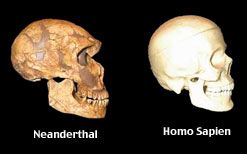
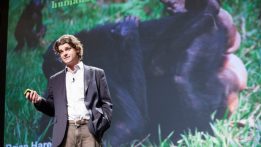
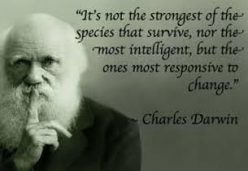



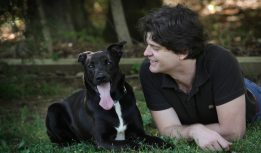









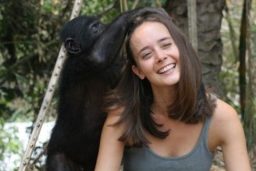
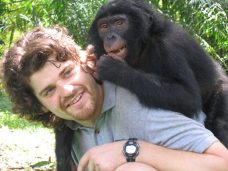
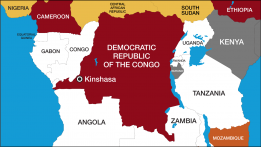
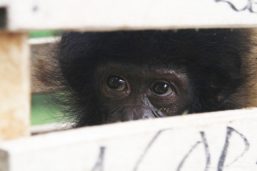

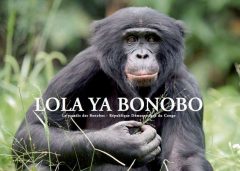

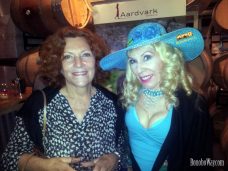
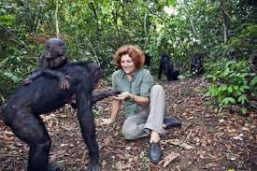
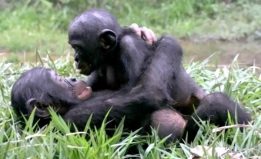

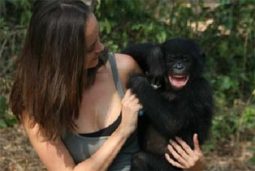
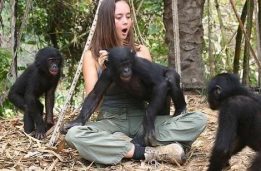
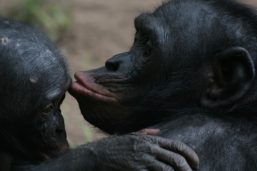
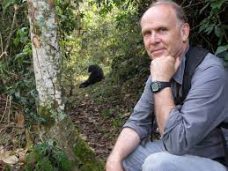


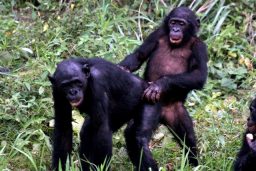

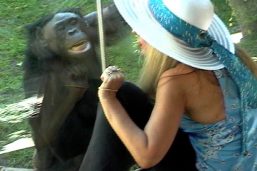
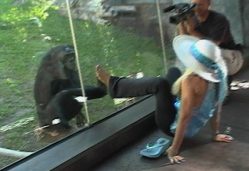

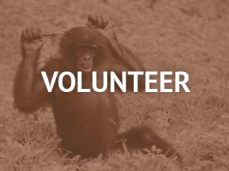
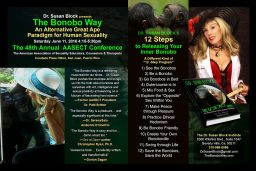

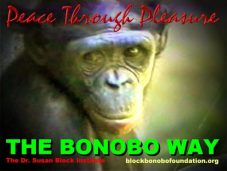

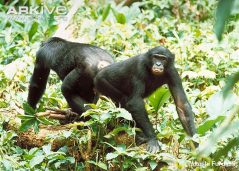











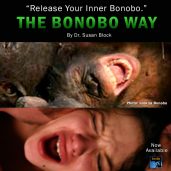




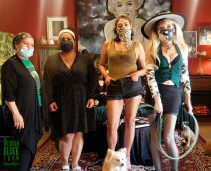

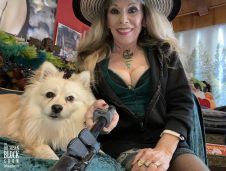








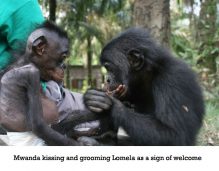






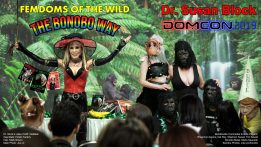


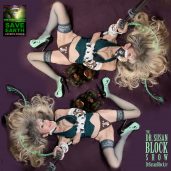
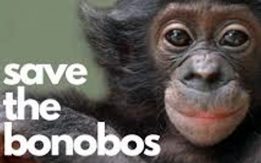

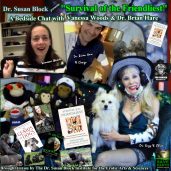








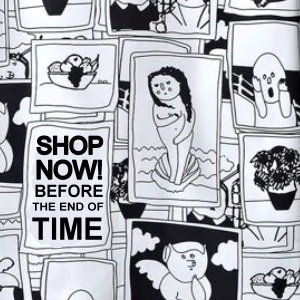

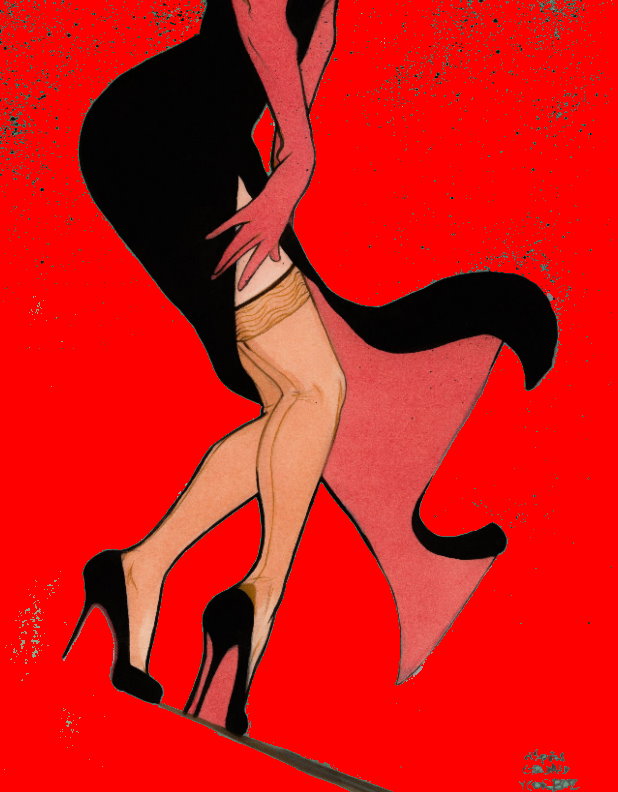
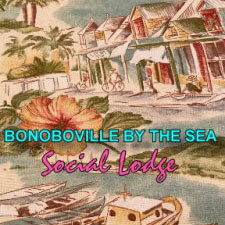



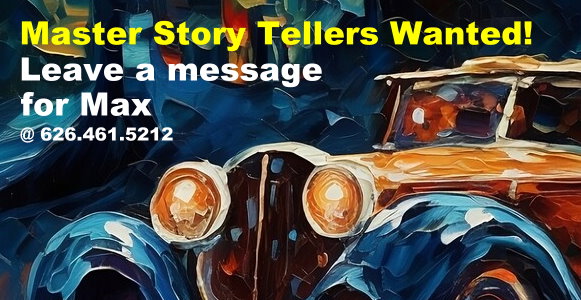



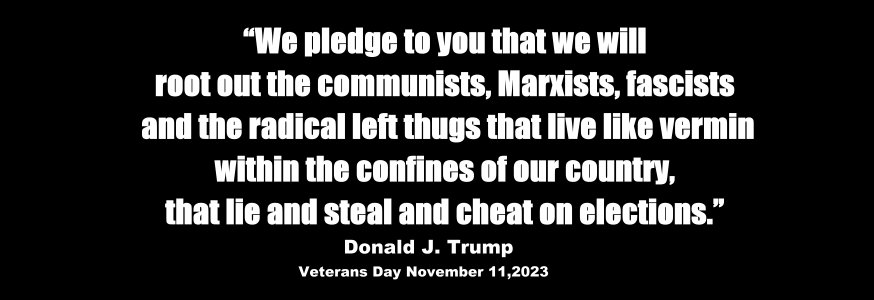







 Get The Bonobo Way
Get The Bonobo Way You Must Read
You Must Read  And Also,
And Also,
08 · 20 · 24 @ 9:01 pm
Dr. Suzy has a point regarding the key differences between survival of the fittest vs the friendliest. And what’s beautiful about it is that it doesn’t completely discount the points made in the traditional argument. It’s true that the more clever and physically fit of a species tend to be the ones who not only survive the most, but amass the resources necessary to separate them from their biological peers. But, in the case of human beings, it’s hard to remain at the top when no one wants to listen to or follow your lead. So understanding how to effectively communicate is an integral skill to develop if you want any form on success as a human being, even if the communication is more shrewd. It’s always fascinating to learn how the bonobos influence Dr. Suzy’s perspective on life and love, and I’m happy to be on the team. #GoBonobos!
08 · 20 · 24 @ 7:08 pm
Dr. Suzy opens your wild heart with this fantastic interview about the world’s coolest nonhuman animals
08 · 20 · 24 @ 5:12 pm
Great show with a lot to learn. You can learn a lot about loyalty from Dogs. Then learn about love through Bonobos. Leave it to Dr. Suzy and her expert guests to show us how the Animal Kingdom can help us get in touch with our Humane side.
08 · 26 · 21 @ 8:25 pm
What an amazing interview and thank you for all that you are doing during these difficult times that we are facing I’m so proud to be part of your peace through pleasure movement always oh, let’s keep on rocking so we realize our fulfilled dream
08 · 26 · 21 @ 8:23 pm
Brilliant! Absolutely love the interview, the enlightened perspectives. The brilliant hot couple. Your gorgeous face, soothing voice, hypnotic eyes! This bonobo fan is grateful to have you as a thought leader, and beautiful addition to my spank bank. Moreover, never before have I been informed about this factual data validating higher kindness and interdependence as the keys to survival. Highly encouraged at the time such news is most needed.
08 · 21 · 21 @ 2:59 am
Yes, all those “Peace Studies” and “Peace and Conflict” departments at universities really ought to team up with primatology and anthropology (and YOU) to study how bonobos manage to never kill each other. Wonder why they don’t. Probably because of all the sex.
08 · 21 · 21 @ 2:57 am
Fantastic discussion. I’ve been hearing your talk about the Bonobo Way for years, but this intense chat with two of the top primatologists, wow. Nice to see Pomeranian Chico also take a starring role. And what a great relevant message: Friendliness wins.
08 · 21 · 21 @ 2:51 am
Bravissima. So much interesting info, my head is spinning. Thank You for spreading the Bonobo Word so that non-scientists like me can get it. What the world needs now is more Bonobo Way & less Trumpanzee. Love Vanessa and Brian. I know they adopt dogs, but could they adopt me?
08 · 20 · 21 @ 12:28 pm
Great interview. Let the animals remind the humans what empathy looks like.
08 · 20 · 21 @ 2:04 am
Amazing! Thank you for sharing and doing such a brilliant job #GoBonobos!!! 0xx0BH
08 · 20 · 21 @ 1:59 am
I love it – it’s so awesome- you are such talent!!!!
08 · 16 · 21 @ 6:22 pm
Sometimes I wish I was born as a bonobo.
08 · 14 · 21 @ 4:20 pm
Very interesting your view of cooperation Darwinism coexistence, My Doctor, you have a way with hedonics
08 · 14 · 21 @ 8:44 am
‘:-]) !! ‘:-])
08 · 14 · 21 @ 2:06 am
Great interview. Go Chico!
08 · 13 · 21 @ 4:13 pm
What a great interview. I especially enjoyed learning about how wolves/dogs evolved to be friendly with humans. And how the bonobos live and thrive by being friendly and accepting newcomers and being curious about them. This stems from love and not fear (chimpanzees). “Survival of the fittest” IS “survival of the friendliest” – perhaps one in the same – it is the “fittest” EQ – emotional intelligence.
08 · 13 · 21 @ 3:50 am
My take away is that Bonobos were “selected” for friendliness because the females reward the friendly males with sex and offspring. Unfriendly males don’t get much opportunity to sire offspring. This is an excellent example of Law of Attraction allowed to work unencumbered. Dr Suzy and her guests cover some deep and far reaching points about what humans can learn about cooperation and fun from our closest cousins. I enjoyed the candor of the interview. We can all learn a few tips from the Bonobos!
08 · 12 · 21 @ 8:13 pm
This was a wonderful show that broke off a lot of useful information about bonobos, dogs and outercourse
Thanks for giving a new perspective on what “Survival of the Fittest” means. “Survival of the Friendliest” is much more satisfying.
08 · 12 · 21 @ 2:40 pm
I love hearing about the Bonobo Way, and this was an excellent interview! I love your passion for talking about bonobos and learning from primatologists! In today’s world, we need to learn that FRIENDLINESS really does improve life quality. Nice folks finish first.
08 · 11 · 21 @ 8:57 pm
Amazing interview, you all are just so much fun. Love the bonobos and I learned a lot about my dog. Always listening, Mario